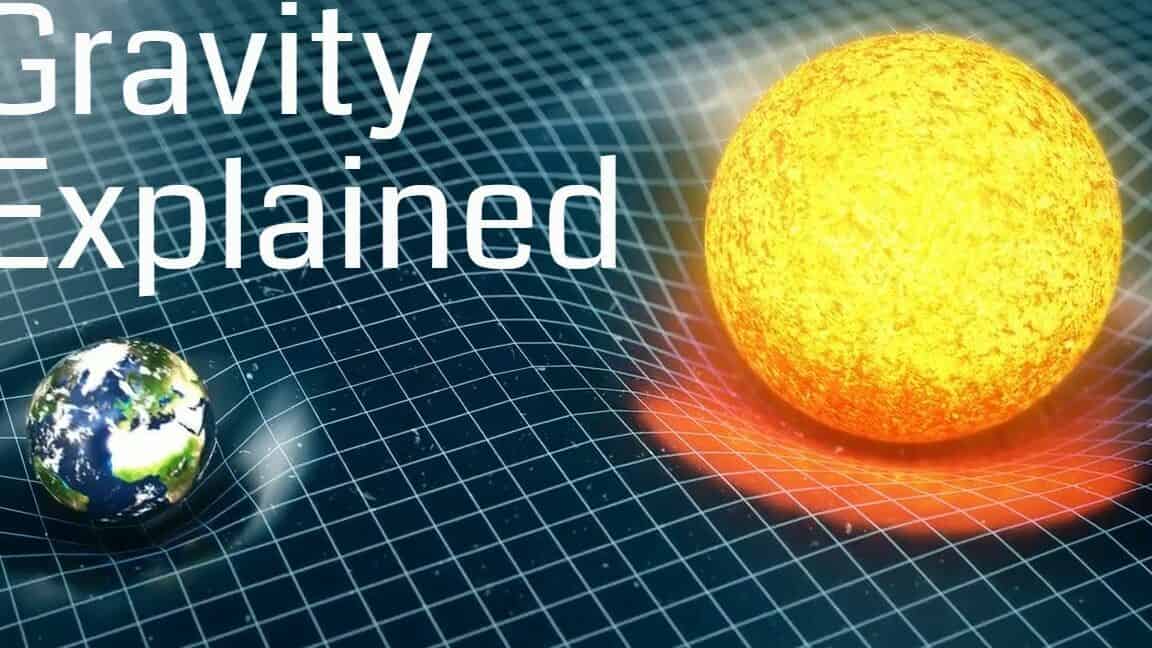
According to Obi-Wan Kenobi, the force is responsible for holding the galaxy together. The same principle can be applied to gravity. In reality, gravity enables us to walk on the surface of the Earth, allows the Earth to orbit around the Sun, and permits the Sun to orbit around the supermassive black hole located at the center of our galaxy. How do you comprehend the concept of gravity? You can find out more about it in our article.
Let’s clarify from the start that you will not discover a definitive answer to the question “What is gravity” here. That’s because such an answer simply does not exist! Gravity represents one of the most enigmatic phenomena that continues to baffle scientists, who have yet to fully comprehend its nature.
There exist numerous hypotheses and opinions on the subject. In fact, there are over a dozen theories on gravity, both traditional and alternative. In this article, we will explore the most fascinating, relevant, and contemporary theories.
Looking for more valuable information and up-to-date news every day? Come join us on Telegram!
Gravity: A Fundamental Force of Nature
In the field of physics, there exist four fundamental forces that shape the world as we know it. Gravity is among these forces.
- Gravity
- Electromagnetism
- The Strong Interaction
- The Weak Interaction
Currently, the prevailing theory explaining the nature of gravity is the General Theory of Relativity (GTR) proposed by Albert Einstein in 1915-1916.
Nevertheless, it is important to note that it is still premature to claim absolute truth. Prior to the development of GTR, the Newtonian theory of gravitation was widely accepted for several centuries before being significantly expanded upon.
Currently, within the realm of general relativity, it is not feasible to fully elucidate and depict all inquiries associated with gravitational force.
Prior to Newton’s discoveries, there was a prevailing belief that terrestrial gravity and celestial gravity were distinct phenomena. It was commonly held that the planets followed their own set of impeccable principles, separate from those governing earthly dynamics.
The Principle of Universal Gravitation
In 1667, Newton uncovered the principle of universal gravitation. Undoubtedly, this principle had been in existence even during the era of the dinosaurs and long before.
Gravity had been a subject of contemplation for ancient philosophers. Galileo, through experimentation, calculated the acceleration of free fall on Earth and discovered that it remains constant regardless of the mass of the bodies. Kepler extensively studied the motion laws governing celestial bodies.
Newton was able to articulate and consolidate the observations into the following:
Two objects are mutually attracted by a force known as gravitational force.
The mathematical representation of the attractive force between objects is:
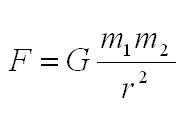
The gravitational constant is represented by G, the masses of the bodies are denoted by m, and the distance between the centers of masses of the bodies is indicated by r.
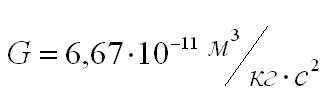

What does the gravitational constant represent? It represents the strength of the force between two objects, each having a mass of 1 kilogram, that are separated by a distance of 1 meter.

According to Newton’s principle, each object generates a gravitational field. The precision of Newton’s principle has been tested at distances less than one centimeter. Naturally, for small masses, these forces are insignificant and can be disregarded.
Newton’s equation is applicable for computing the attraction force between planets and the sun as well as between small objects. We simply do not perceive the force with which, for example, the balls on a billiard table are drawn to each other. Nonetheless, this force is present and can be calculated.
The attraction force acts between any object in the Universe. Its impact spans across any distance.
Gravitation in General Relativity
In spite of the fact that Newton’s theory is highly applicable in practical situations, it possesses certain limitations. The law of universal gravitation serves as a mathematical representation, but fails to offer an understanding of the fundamental physical essence of objects.
As per Newton’s theory, the force of gravitation functions at any given distance and is instantaneous. However, considering that the speed of light is the maximum speed in the universe, there exists an inconsistency. How can gravitation act instantaneously across any distance when light takes several seconds or even years to traverse them?
In the realm of General Relativity, gravitation is not viewed as a force that acts upon objects, but rather as a curvature of space and time caused by mass. Thus, gravity is not an interaction of forces.
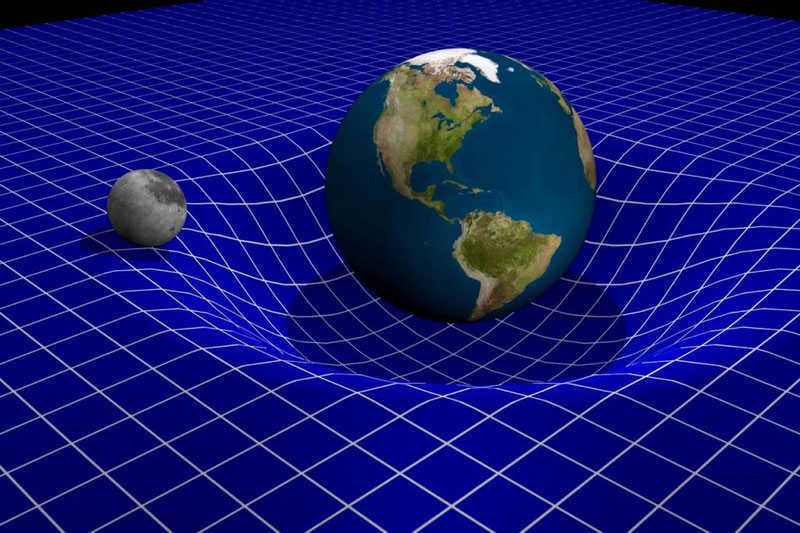
What is the effect of gravity? Let’s attempt to explain it using a comparison.
Imagine space as a stretchy sheet. When a lightweight tennis ball is placed on it, the surface remains flat. However, if a heavy object is placed near the ball, it creates a depression in the sheet, causing the ball to roll towards the larger, heavier object. This is known as “gravity”.
By the way! Our readers can now enjoy a 10% discount on any type of service.
The breakthrough in the detection of gravitational waves
In 1916, Albert Einstein made a groundbreaking prediction about the existence of gravitational waves. However, it took a century for scientists to finally discover these waves in 2015.
So, what exactly are gravitational waves? Let’s use an analogy once again. Imagine throwing a stone into a calm body of water. As the stone hits the water’s surface, it creates ripples that spread outward in the form of circles. Similarly, gravitational waves are disturbances or ripples, but instead of water, they occur in the fabric of space-time.
Instead of water, we have space-time, and instead of a stone, let’s say we have a black hole. Any accelerated movement of mass produces gravitational waves. When these waves pass through an area, it causes a change in the distance between bodies that are in a state of free fall.
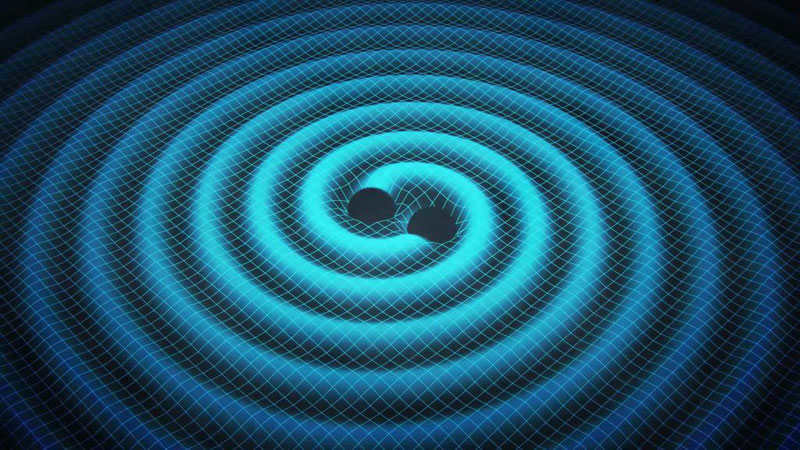
Due to its weak nature, the detection of gravitational waves posed significant technical challenges. Advances in technology have now made it possible to detect bursts of gravitational waves originating from extremely massive sources.
An ideal event for detecting a gravitational wave is the merger of black holes. However, such events occur quite infrequently. Nonetheless, scientists have successfully detected a wave that rippled through the expanse of the Universe.
To capture gravitational waves, a detector with a 4-kilometer diameter was constructed. This detector recorded oscillations of mirrors suspended in vacuum and the interference of light reflected from them as the wave passed through.
Gravitation and elementary particles
Every interaction in the standard model is associated with specific elementary particles acting as carriers. These particles can be seen as responsible for the interactions that take place.
Gravity, for instance, is believed to be mediated by a hypothetical massless particle called the graviton. It carries energy and is responsible for the force of gravity. It is worth mentioning that there are other elementary particles, such as the Higgs boson, which have garnered considerable attention and are worth exploring further.
Lastly, here are a few intriguing facts about gravity.
10 intriguing facts about gravity

- In order to overcome the force of gravity exerted by the Earth, an object needs to have a velocity of 7.91 km/s. This velocity is known as the first cosmic speed and is sufficient for an object, such as a space probe, to orbit around the planet.
- To escape the gravitational field of the Earth, a spacecraft must have a velocity of at least 11.2 km/s. This velocity is referred to as the second space velocity.
- Black holes are objects with the strongest gravitational pull. Their gravity is so powerful that it even attracts light particles, known as photons.
- In the equations of quantum mechanics, the force of gravity is not included. This is because when gravity is incorporated into these equations, they become irrelevant. This is one of the major challenges in modern physics.
- The force of gravity becomes stronger as the mass of an object increases. For instance, if a person weighing 60 kilograms on Earth were to be weighed on Jupiter, the scale would show a weight of 142 kilograms.
- NASA scientists are currently working on developing a gravity beam that would allow for non-contact movement of objects, effectively overcoming the force of gravity.
- Even in orbit, astronauts still experience the effects of gravity, albeit in the form of microgravity. It is as if they are in a perpetual state of falling along with their spacecraft.
- Gravity is always an attractive force and never repels objects.
- A black hole the size of a tennis ball exerts the same gravitational force as our planet.
Having gained an understanding of the concept of gravity, you can now be informed about the specific equation utilized for determining the force of attraction. In the event that the weight of scientific knowledge feels overwhelming, our student services are available to provide assistance. Our dedicated team is committed to helping you acquire knowledge effortlessly even under the most challenging circumstances!

Throughout history, individuals have pondered the nature of the force that draws objects towards the Earth. Visionaries like Newton and Einstein have made efforts to elucidate the phenomenon of gravity, yet its complete comprehension remains elusive to this day.
Gravity, derived from the Latin word “gravis” meaning “heavy,” is the attractive force between two bodies. Any physical entity possessing matter, i.e., anything that can be physically sensed, also possesses this gravitational attraction. Gravity is among the four fundamental forces in the cosmos, alongside electromagnetism, as well as the strong and weak nuclear interactions. Despite being the weakest force, it is the most observable. Thanks to the influence of gravity, individuals are able to walk on Earth, and planets can revolve around the Sun.
The amount of gravity exerted by an object is directly related to its mass. Therefore, objects with a greater mass experience a stronger gravitational pull. Due to its size and proximity, the Earth attracts all objects and individuals towards it. For instance, when an apple falls, it is drawn towards the Earth’s surface instead of being pulled towards a person’s head.
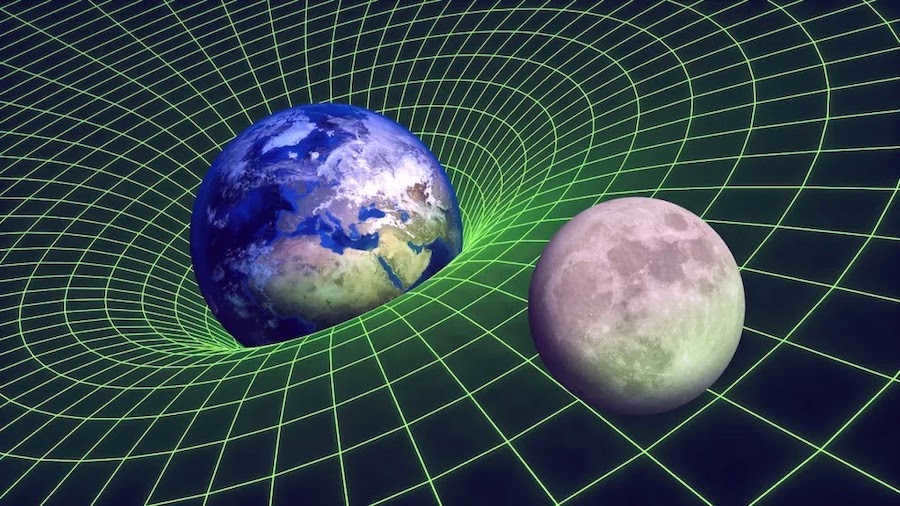
Gravity is also influenced by distance. The gravitational pull becomes weaker as an object gets farther away.
When attempting to explain the phenomenon of objects falling to the ground, ancient scientists developed their own theories. The philosopher Aristotle, from ancient Greece, argued that objects have an innate tendency to move towards the center of the universe, which he believed to be located in the middle of the Earth.
However, in the 16th century, Nicolaus Copernicus, from Poland, realized that the movements of planets in the sky are determined by the position of the Sun, which serves as the center of the solar system. One hundred years later, Isaac Newton, a British mathematician and physicist, built upon Copernicus’s concepts and concluded that all objects are attracted to one another because the Sun attracts the planets.
Today, Einstein’s general theory of relativity stands as the prevailing explanation for gravity.
Newton’s classical theory of gravitation
Isaac Newton, an English physicist, famously had a eureka moment while strolling through an apple orchard on his family’s property. As he gazed up at the daytime sky, he noticed the moon, and then witnessed an apple detach from a branch and descend to the ground. Having already delved into the laws of motion, Newton deduced that the apple fell due to the Earth’s gravitational field. He further understood that the moon, too, was subject to the forces of gravity, as it orbited around the Earth rather than remaining stationary. This realization led him to believe that the same force was at play with both the apple and the moon.
Newton’s predecessors had different lines of reasoning. Galileo Galilei, the Italian physicist, held the belief that natural gravity operates on the Earth. In contrast, Johannes Kepler, the German astronomer, held the belief that the laws of motion in the celestial spheres are vastly different from those on Earth. Newton, however, had a different perspective and merged these two types of gravity in his thoughts.
Newton’s law of gravitation, which he formulated in 1687, postulates that there exists a gravitational force of attraction between any two bodies in the universe. This law can be expressed mathematically through the equation: if M and m represent the masses of the two bodies, and r is the distance separating them, then the mutual gravitational force F between them is given by F = GMm/r². In this equation, G represents the gravitational constant, which is equal to the force exerted by two 1 kg masses when they are 1 meter apart. The equation demonstrates that the force (F) is directly proportional to the product of the masses (M and m) and inversely proportional to the square of the distance (r) between the bodies. Consequently, as the masses of the bodies increase, the gravitational attraction between them also increases, while the strength of the attraction weakens as the bodies move farther apart from each other.
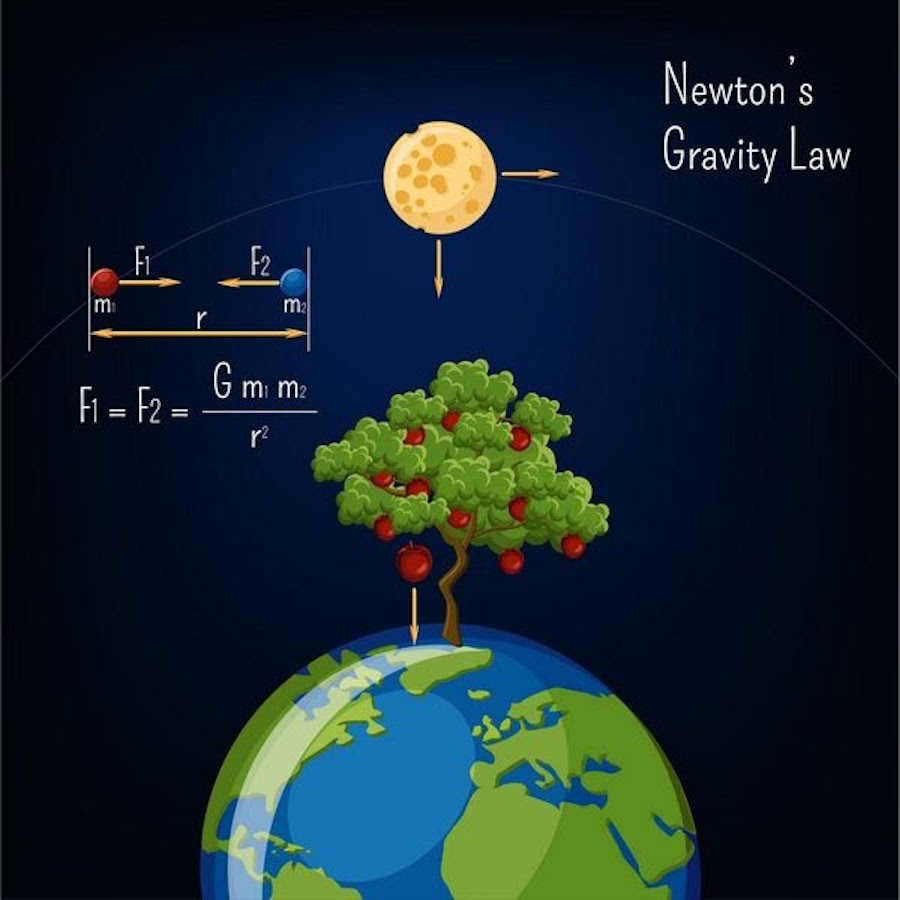
The law is applicable to all physical bodies in the Universe without any exceptions. The gravitational force of the Earth affects all bodies equally, regardless of their location on the globe. Every individual experiences the Earth’s gravitational force, which is perceived as weight.
According to Newton’s Law of Universal Gravitation, the Earth not only attracts the apple, but the apple also attracts the Earth. However, due to the Earth’s immense mass, it requires a significantly greater force to cause any noticeable movement, resulting in the apple falling while the Earth remains relatively stationary. This principle extends to a larger scale as well. Every object within the universe exerts a gravitational pull on every other object, with the strength of the force increasing with proximity and mass.
Newton stated that the gravitational force operates at all distances and with instantaneous effect. However, the speed of light is the fastest speed known to mankind, and it takes light several seconds or even years to travel long distances.
Einstein’s Theory of Gravity
In 1798, the British physicist Henry Cavendish conducted one of the earliest highly accurate experiments to determine the value of G, the gravitational constant. He created a torsion scale by attaching two small lead balls to the ends of a horizontally suspended beam. Adjacent to each ball, Cavendish placed a large spherical lead weight. The small balls were attracted by the gravitational force exerted by the heavy weights, causing the wire to twist slightly. This phenomenon allowed Cavendish to calculate the magnitude of G.
Surprisingly, Cavendish’s estimation for G differed by merely 1% from the presently acknowledged value of 6.674 × 10^-11 m^3/kg^1 * s^2. In order to obtain a precise measurement, scientists are required to develop exceedingly sensitive equipment.
The understanding of gravity was subsequently revolutionized by German-American physicist Albert Einstein. His general theory of relativity demonstrated that gravity arises from the curvature of space-time, indicating that even beams of light that should conform to this curvature are bent by immensely massive objects. According to his theory, gravity is not perceived as a force that acts upon bodies, but as the curvature of space and time caused by mass and energy.
Einstein’s theories were utilized to propose the presence of black holes, cosmic entities with such immense mass that even light is unable to evade from beneath their surface. In the vicinity of a black hole, the accuracy of Newton’s law of universal gravitation in describing the movement of objects diminishes.
The theory, which Einstein unveiled in 1915, expanded upon his special theory of relativity, which the scientist had formulated ten years earlier. The special theory of relativity posited that space and time were inseparably connected, although it did not acknowledge the existence of gravity.
During the development of his general theory of relativity, Einstein came to the realization that massive objects have the ability to distort space-time. To illustrate this concept, imagine placing a large object at the center of a trampoline. The weight of the object would cause the fabric to sink, creating dimples. If you were to roll a ball along the edge of the trampoline, it would gradually spiral inward towards the central object.
Similarly, the rotation of a heavy object such as Earth has the potential to twist and distort the surrounding space-time. In 2004, NASA launched the Gravity Probe B to investigate this phenomenon. According to the agency, the axes of the satellite’s gyroscopes, which were meticulously calibrated, exhibited a slight drift over time, providing further support for Einstein’s theory.
Einstein made a prediction that the collision of two black holes would produce gravitational waves, which are distortions in the fabric of space-time. In 2016, the Laser Interferometer Gravitational-Wave Observatory (LIGO) confirmed this prediction by detecting a gravitational wave signal for the first time. This particular gravitational wave was generated by the merging of two black holes with masses equivalent to 29 and 36 times that of the Sun. This event occurred approximately 1.3 billion years ago.
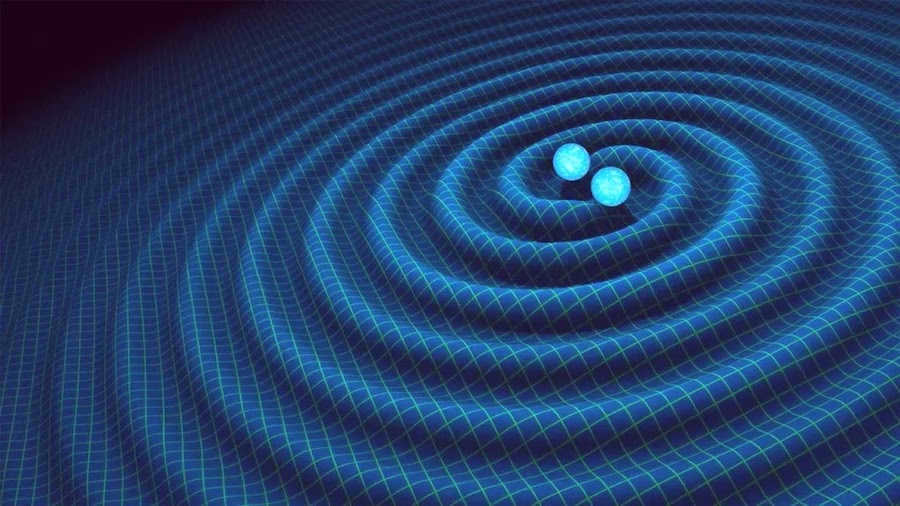
Since then, a total of 50 instances of gravitational waves have been detected by LIGO and its European counterpart Virgo.
The equivalent of the gravitational force
The gravitational field of the Earth is a result of the gravitational force exerted by the Earth and the centrifugal force produced by its daily rotation.
The gravitational force on the Earth’s surface fluctuates from 9.780 m/s² at the equator to 9.832 m/s² at the poles. In approximate estimations, it is often rounded to 9.81, 9.8, or 10 m/s². However, this only considers the gravitational force and disregards the centrifugal force caused by the Earth’s rotation. As an object ascends above the Earth’s surface, the value diminishes.
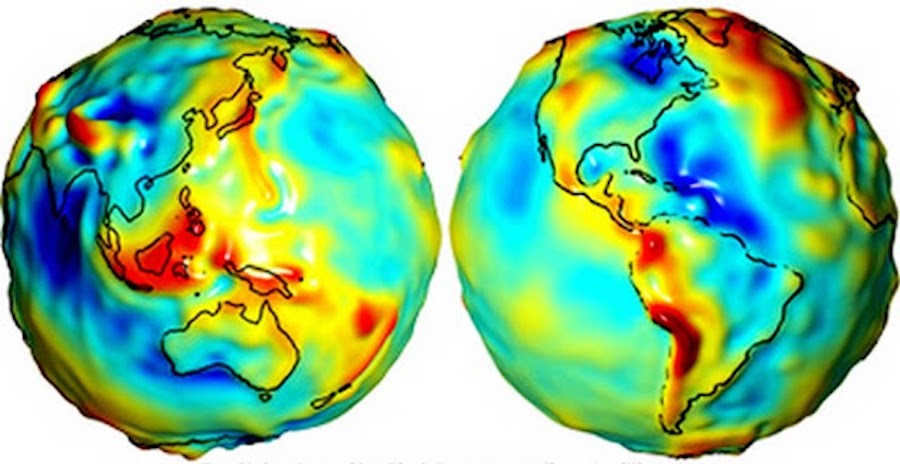
NASA has generated a visualization representing irregularities in gravity on Earth as a component of the GRACE initiative. The color red indicates regions where gravity is more intense, while blue signifies areas where it is less potent than the established norms (Photo: NASA)
According to French scientists, the variation of the gravitational constant across different regions of our planet is directly correlated to the intensity of the Earth’s magnetic field. Their hypothesis suggests that this phenomenon can be explained by the existence of additional dimensions of space that are not directly observable. Based on their calculations, it has been determined that areas with a stronger magnetic field will also experience a stronger gravitational pull. This effect is most pronounced at the north and south magnetic poles, which do not align with the geographic poles. The northern magnetic pole is situated within the boundaries of the Canadian Arctic, while the southern magnetic pole can be found near the edge of Antarctica.
If we consider the gravity value on Earth as a standard, then on the Sun it would be equivalent to 27.9, on Mercury – 0.37, on Venus – 0.9, on the Moon – 0.16, on Mars – 0.37, on Jupiter – 2.6. So, if a person weighing 60 kg on Earth is weighed on Jupiter, the scale would indicate 142 kg.
Astronauts in orbit also experience microgravity. It is as though they are continuously falling alongside the spacecraft they are in.
Our Present Knowledge of Gravity
Ongoing scientific investigations are shedding new light on the nature of gravity. While Newton’s theory of gravity provided a solid foundation, Einstein’s theory of relativity has helped explain certain discrepancies. However, recent advancements in atomic, nuclear, and elementary particle physics have revealed that gravity cannot be solely explained by interactions within the realm of quantum physics. In other words, Einstein’s theory falls short when it comes to understanding the microscopic world. As a result, scientists have been exploring the concept of “quantum gravitation” or a quantum-based description of gravitational interaction.
There are currently two main areas of development in the field of quantum gravity – string theory and loop quantum gravity. In string theory, particles and the background spacetime are replaced by strings and their multidimensional counterparts known as branes.
Loop quantum gravity, on the other hand, aims to formulate a quantum field theory without relying on a background spacetime. According to this theory, space and time are composed of discrete units called quantum cells. These cells are interconnected in a specific manner, creating a discrete structure on small scales and smoothly transitioning into a continuous spacetime on larger scales. It is speculated that loop quantum gravity may be able to explain the explosive event that preceded the formation of the universe.
Since the 1980s, researchers at the University of Pennsylvania have been working on a groundbreaking concept known as loop quantum gravity. This paradigm suggests that the universe’s vast structures, as we know them today, are actually a result of quantum fluctuations in space-time that occurred during the birth of our world.
The existing theory of the Big Bang, as previously mentioned, fails to account for what existed prior to the emergence of the Universe. Researchers from Pennsylvania propose an alternative concept known as the Big Bounce hypothesis, which suggests that our current expanding universe originated from the collapse of a previous universe. By integrating principles of quantum mechanics and relativity theory, these scientists have formulated a description of this state. According to the authors of the study, they have successfully explained the occurrence of cosmic radiation that occurred immediately after the birth of the universe. They assert that quantum threads are intricately woven into the fabric of space-time, as defined by Einstein’s theories. This discovery may potentially provide insights into the uneven distribution of galaxies and matter throughout the universe in the future.
Antigravity is a concept that involves a supposed ability to counteract or even surpass the force of gravity through repulsion.
Currently, the method used to explore antigravity is to release an object from the grip of gravity, allowing it to be free from its effects for a period of time. For instance, the flight of an individual in a wind tunnel is made possible by the opposing force of air flow counteracting the pull of gravity.

Currently, the question of whether antigravity exists as an independent phenomenon remains unanswered, as researchers are still studying the phenomenon of gravity itself.
Ways to overcome gravity
In order to counteract the force of gravity on Earth, an object must reach a speed of 7.91 km/s. This is known as the first cosmic velocity, which is sufficient for an object to enter into orbit around the planet. To break free from the Earth’s gravitational field, a spacecraft must achieve a speed of at least 11.2 km/s. This is known as the second cosmic velocity. To venture beyond the boundary of Earth’s gravitational sphere, which extends to a distance of approximately 930 thousand kilometers from the planet, an object must reach a speed of approximately 16.6 km/s. This is known as the third cosmic speed.
If there was no gravity
Based on the aforementioned principles of physics, this scenario would be practically impossible.
Jay Bucky, a former astronaut and physicist from NASA, points out that our bodies have adapted to the gravitational force of the Earth. When gravity is almost non-existent (such as on the International Space Station), our bodies undergo reorganization. Astronauts on space missions experience a loss in bone mass and muscle tone, as well as a disruption in their sense of balance.
Dr. Kevin Fong also explains that the decrease in red blood cells in the body leads to a condition known as space anemia. Additionally, wounds take longer to heal, immune systems weaken, and sleep problems arise. Therefore, without gravity, muscles, the vestibular system, the heart, and blood vessels would develop differently.
According to Karen Masters, an astronomer from the University of Portsmouth in the UK, if gravity were to disappear, the Earth would rapidly begin to spin like a rope being unraveled overhead. As a result, everything on the planet, including water and the atmosphere, would be propelled straight into space. Only structures with strong foundations would be able to remain attached to the Earth’s surface for a limited period of time.
Eventually, the absence of gravity would lead to the destruction of the planet itself, causing it to break apart and scatter in various directions.
A similar scenario is presented by the Discovery News Channel in their video, but with the Sun as the example.
If gravity did not exist, stars and planets would cease to exist, and the universe would become a chaotic mix of scattered atoms and molecules.
Can artificial gravity be achieved?
When an individual is in space, away from the gravitational forces experienced on Earth’s surface, they experience weightlessness. While all the masses in the universe will still attract them, they will also attract the spaceship, causing the person to essentially “float” inside it. This raises the question – how can artificial gravity be created to allow a person to walk calmly on the spaceship instead of floating?
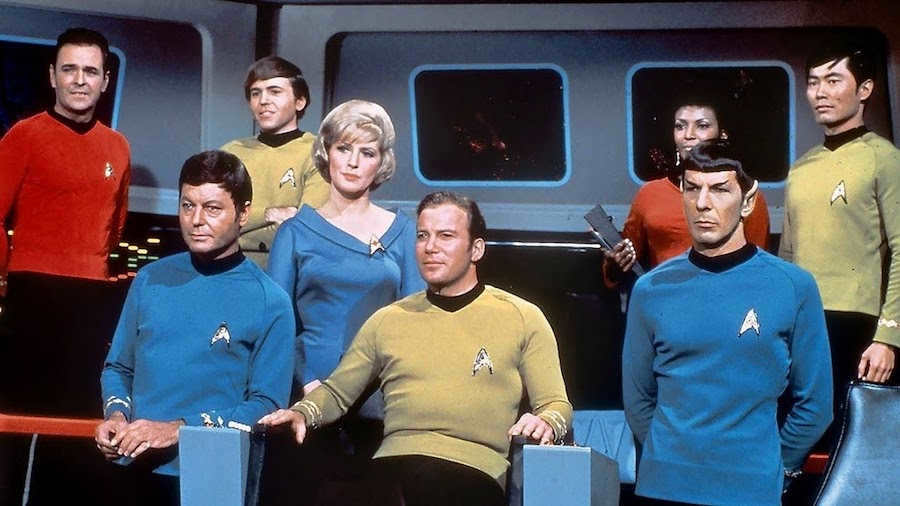
Previously, scientists believed that artificial gravity could be achieved through the use of negative gravitational mass, which was expected to be inherent in antimatter. However, the European Organization for Nuclear Research (CERN) has recently made a discovery that the inert mass of the antiproton (the “mirror image” of the proton, with opposite characteristics in all physical interactions) is actually the same as that of the proton. If gravity had any different effects on antiprotons, physicists would have noticed the discrepancy. It turns out that gravity affects antiprotons and protons in the same way. Additionally, CERN has successfully produced antihydrogen, the first stable form of antimatter. Although it is still under study, there have been no significant deviations from the current theory of antimatter.
Gravity: a Simple Explanation and Woods’ Theory
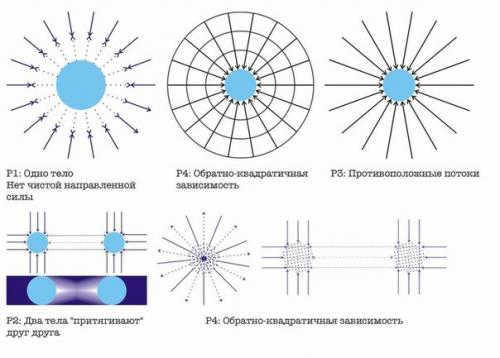
Foundational principle.
According to this principle, the gravitational force arises from the movement of minuscule particles at high velocities in every possible direction within the cosmos. It is postulated that the flow rate of these particles remains consistent in all directions, thereby leading to object A being bombarded by particles from every angle. As a result, the object experiences inward pressure but does not encounter the specific force P1.
The dependence is quadratic in an inverse way.
From our assumption that an object absorbs or slows down some (or all) of the gravitational particles converging on it, it can be deduced that the intensity of the flux of gravitational particles emitted from a massive object is less than the intensity of the flux falling on the object. It is possible to assume that this discrepancy in flux momentum, and therefore the force exerted on any object near the object, is distributed over a spherical surface centered on the object in question (P4). The flux momentum discrepancy over the entire spherical surface surrounding the object is not affected by the size of the surrounding sphere, while the surface area of the sphere increases in proportion to the square of the radius. As a result, the momentum discrepancy per unit area decreases in an inverse quadratic relationship with distance.
Proportionality to mass.
Based on the information presented above, there is a force that is directly proportional to the surface area of an object. However, the force of gravity is also proportional to the mass of the object. To account for the proportionality from mass, the theory proposes the following: a) matter is made up of extremely small basic elements, with a large amount of empty space; b) the particles responsible for gravity are so tiny that only a small fraction of them interact with matter. Consequently, the “Shadow” of each object is directly proportional to the surface area of each basic element of matter. If we assume that all elementary opaque (to gravitational particles) elements of matter are identical (i.e., have the same density to surface ratio), then it can be inferred that the shielding effect is (at least approximately) proportional to the mass (P5).
What is Gravity? The True Nature of Gravity
Gravity, also known as the force of attraction, is responsible for the mutual attraction between two bodies. This force is what causes objects like apples to fall to the ground and planets to orbit the Sun. The strength of gravity is directly proportional to the mass of an object.
A Fundamental Force
Gravity is considered one of the four fundamental forces in nature, alongside electromagnetic forces, strong nuclear forces, and weak nuclear forces.
Gravity is what gives objects their weight. When you step on a scale, it measures the force of gravity acting upon your body. On Earth, gravity is approximately 9.8 meters per second squared, or 9.8 m/s².
According to ancient philosophers like Aristotle, it was believed that heavier objects fall to the ground faster. However, later experiments have proven this notion to be false. The discrepancy in the falling speed of a feather and a bowling ball can be attributed to the opposing forces of air resistance and gravity.
Newton’s law of universal gravitation states that the force of gravity is directly proportional to the product of the masses of two objects and inversely proportional to the square of the distance between them.
In the 1680s, Isaac Newton formulated his theory of universal gravitation. He observed that gravity affects all forms of matter and is determined by both mass and distance. Every object exerts an attractive force on another object that is proportional to the product of their masses and inversely proportional to the square of the distance separating them.
In 1687, Newton released his findings on the concept of gravity, which was widely regarded as the most accurate explanation until Einstein introduced his General Theory of Relativity in 1915. According to Einstein’s theory, gravity is not a force, but rather a result of the distortion of space-time caused by matter. One of the notable predictions of the General Theory of Relativity is that light will curve when passing near massive objects.
Interesting facts
- The Moon has approximately 16 percent of the gravity that Earth has, Mars has about 38 percent of Earth’s gravity, and Jupiter, the largest planet in the solar system, has 2.5 times the gravity of Earth.
- Although gravity was not technically “discovered,” there is a legend that the renowned astronomer Galileo Galilei conducted early experiments with gravity by dropping balls off the Leaning Tower of Pisa to observe their rate of descent.
- Isaac Newton, who was only 23 years old and returning from university at the time, observed an apple falling in his garden and began to unravel the mysteries of gravity. It is often said, although likely a myth, that the apple fell on his head.
- One early test of Einstein’s theory of relativity involved the bending of starlight during a solar eclipse on May 29, 1919.
- Black holes are incredibly massive entities that possess such intense gravitational forces that they are capable of trapping even light within their grasp.
- Einstein’s general theory of relativity and the peculiar laws that govern the behaviors of minuscule particles like photons and electrons, which comprise the vast expanse of the universe, are fundamentally incompatible.
The Nature of Gravity and its Explanation: The Interactions between Elementary Particles
The intricate dynamics of the cosmic realm can be attributed to the vast repertoire of elementary particles that exist. Within this intricate framework, diverse interactions occur between these particles, operating at levels that remain largely speculative. However, it is important to note that the strength and nature of these interactions among elementary particles can vary significantly.
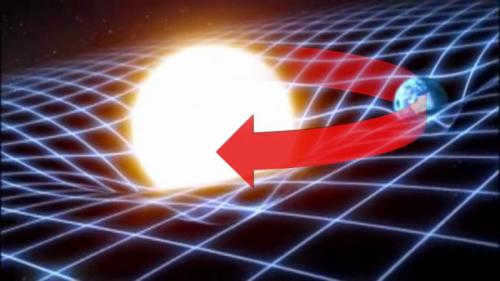
These two characteristics make gravity the dominant force in shaping the large-scale structure of the universe. Without gravity, galaxies, stars, and planets would not form and the universe as we know it would not exist. Despite its weak strength compared to other forces, gravity has a profound impact on the cosmos.
- Contrary to atomic forces, the gravitational pull is more noticeable when objects are far apart. Consequently, the pull of the Earth’s gravity keeps the Moon within its field, and the comparable force of Jupiter effortlessly maintains the orbits of multiple satellites, each with a mass similar to that of the Earth!
- Moreover, gravitational attraction always exists between objects, and this force weakens gradually as the distance between them increases.
The development of a relatively recent and rather slender theory of gravitation is the result of centuries of observations of the planetary and celestial body movements. This task was made considerably easier due to the fact that these bodies move in a vacuum, devoid of any other plausible interactions. Galileo and Kepler, two renowned astronomers of their time, played a significant role in paving the way for new discoveries through their valuable observations.
However, it was only the brilliant Isaac Newton who was able to formulate the initial theory of gravity and express it in a mathematical form. This became known as the first law of gravity, with the mathematical representation displayed above.
Gravity: A Simple Explanation of What It Is
Gravity is a concept that seems simple, familiar to everyone since their school days. We all recall the tale of how an apple fell on Newton’s head, leading to his discovery of the law of universal gravitation. However, the truth is not as straightforward as it may appear. In this article, we will strive to provide a precise and comprehensive answer to the question: What exactly is gravity? Additionally, we will address the primary myths and misunderstandings surrounding this captivating phenomenon.
Gravitational force. Weak force.
The weak interaction is one of the four fundamental interactions in nature. Its existence was first suggested when scientists observed the instability of the neutron and some atomic nuclei. While it is weaker than the strong and electromagnetic interactions, it is still stronger than the gravitational interaction. However, in everyday life, the gravitational interaction plays a much more significant role. This is because its reach is infinite, meaning that the gravitational attraction of all the atoms on Earth affects objects on its surface. In contrast, the weak interaction has a very limited range, estimated to be around 10-16cm (three orders of magnitude smaller than the strong interaction). Despite its small range, the weak interaction plays a crucial role in various natural processes. For instance, if the weak interaction could be “turned off,” the Sun would cease to shine, as the process of transforming a proton into a neutron, positron, and neutrino would not be possible.
p → n + e + + + ν, is the process by which four protons are transformed into helium. This process is what powers the Sun and other stars. Neutrino emission through weak interactions plays a crucial role in stellar evolution. Without weak interactions, particles such as muons, pions, strange and charmed particles, which decay through strong interactions, would be stable and widespread in ordinary matter. The significance of weak interactions lies in the fact that it does not adhere to certain limitations observed in strong and electromagnetic interactions. Specifically, it does not obey the law of parity conservation.
According to modern physics, it is postulated that all recognized forms of interactions are manifestations of the identical essence and ought to be expounded in a coherent manner. (Grand Unification, Super Unification). Currently, a coherent theory encompassing weak and electromagnetic interactions has been formulated.
The force of gravity.
Gravitation, gravitational force, or gravitational interaction is a fundamental force that acts universally between all forms of matter. Sir Isaac Newton formulated the law of universal gravitation, which holds true when the force of gravity is relatively weak and bodies are moving at speeds much slower than the speed of light. However, in the general case, gravitation is described by Albert Einstein’s general theory of relativity, which explains how matter affects the properties of four-dimensional space-time. These space-time properties, in turn, influence the motion of celestial bodies and other physical processes. This sets gravitation apart from other fundamental forces. However, modern physics entertains the possibility that at extremely high energies, all forces may merge into a single unified interaction.
The concept of gravity as a universal characteristic of objects has been present since ancient times and was reintroduced during the 16th and 17th centuries in Europe. For instance, I. Kepler stated that “gravity is the mutual attraction of all objects”. Eventually, in 1678, I. Newton provided a mathematical expression for the law of universal gravitation in his renowned work “Mathematical Beginnings of Natural Philosophy”. In this formulation, the law is applicable when considering objects as point masses. The gravitational constant, G, was determined by G. Cavendish in 1798 to be G = 6.6745(8) * 10 -11 m 3 s -2 kg -1 . The interaction between multiple objects, when treated as point masses, is determined using the principle of superposition of forces. This principle can also be applied to calculate the interaction force between objects with finite dimensions by breaking them down into smaller parts that can be treated as point masses. According to formula (1), the gravitational force depends solely on the position of the particles at a given moment in time. This implies that the interaction propagates instantaneously. However, considering the finite but relatively high speed of interaction propagation suggested by modern physics, formula (1) can be used for objects moving at not very high speeds and at relatively close distances. This scenario applies to the bodies within the Solar System.
Gravity is the force of attraction that exists between two particles of matter or two objects, which is responsible for keeping the planets in their orbits around the Sun and the Moon in its orbit around the Earth. (As the distance between two objects increases, their gravitational attraction decreases.) Additionally, gravity is what keeps any object on Earth or any other celestial body from floating away into space. The strength of gravity depends on the size of the object – the larger the object, the stronger its gravitational pull, and vice versa. Due to the Moon’s smaller size compared to Earth, its gravitational pull is only one-sixth of our planet’s gravitational pull. This is why American astronauts on the Moon were able to effortlessly jump around in large leaps.
Gravity is also the reason why the Earth and other celestial bodies in our solar system have a generally spherical shape. When our planetary system was formed, gravity attracted and grouped together the dust particles and gases that were moving through space. When a large amount of matter accumulates in one location, it forms a spherical shape because gravity pulls everything towards the center. However, the Earth is not perfectly spherical. As the Earth rotates on its axis, there is an additional force that causes the Earth to slightly expand in the equatorial region.
What is Gravity? Understanding Gravitational Attraction
In the context of gravitational attraction, we can explain it through Newton’s law, which states that the force of gravitational attraction between two objects with masses, denoted as “m”, and separated by a distance “r”, is given by:
Fg = G * (m1 * m2) / r2
Here, G is the gravitational constant, approximately equal to 6.67×10-11 N(m/kg)2. This law holds true when the velocity of light is much larger than the distance between the objects and the gravitational force is weak (for instance, when studying an object at a distance R from a body with mass M).
However, in the general case, gravitation is described by more complex equations.
The law of universal gravitation is one of its applications, which is also observed in various studies. It is a direct consequence of the quadratic increase in area with increasing radius, resulting in a quadratic decrease in the contribution of any unit area to the total area of the sphere.
The gravitational field, like any other field, allows for the calculation of potential energy resulting from the gravitational attraction between two bodies. The value of this energy remains constant even when the bodies are moved along a closed path. The presence of a gravitational field also implies the conservation of the total energy, comprising both kinetic and potential energy, which simplifies the analysis of the movement of bodies within the field. In the context of Newtonian mechanics, gravitational interaction is governed by this principle, meaning that the gravitational force acting on an object depends solely on its position at a given time, regardless of its mass or movement.
Objects of immense size, such as planets, stars, and galaxies, possess significant masses and therefore generate substantial gravitational fields.
Gravity, despite being the weakest force, holds immense importance in the universe due to its ability to act at all distances and on all positive masses. The electromagnetic interaction between celestial bodies is comparatively small on cosmic scales because these bodies possess a net electric charge of zero, making them electrically neutral as a whole.
Unlike other interactions, gravity is universal in its influence on all matter and energy. There have been no instances of objects completely devoid of gravitational interaction.
Given its global nature, gravity plays a significant role in shaping the structure of galaxies, the formation of black holes, the expansion of the universe, and basic astronomical phenomena like planetary orbits. Additionally, it is responsible for the gravitational attraction experienced by objects on Earth’s surface and the phenomenon of falling bodies.
Gravity: An Explainer Video
The Origins of Gravity. The theory of gravity has its limitations – and this is an undeniable truth!
No theory is perfect, and the theory of gravity is not immune to this concept.
The theory of gravity is not perfect, but some of its shortcomings are not evident from the perspective of Earth. For instance, based on the theory, the gravitational force exerted by the Sun on the Moon should be greater than that on Earth, which would result in the Moon orbiting the Sun instead of the Earth. However, by observing the Moon’s movement in the night sky, we can unequivocally ascertain that it revolves around our planet. During our schooling, we were also informed about Isaac Newton, who identified gaps in the theory of gravity. He also introduced a novel mathematical concept known as “fluxion,” which he later developed into the theory of gravity. Although the notion of “fluxion” might seem unfamiliar, it is now referred to as a “function.” Nevertheless, we encounter functions in our education, yet they too possess imperfections. Therefore, it is probable that Newton’s “proofs” of the theory of gravity are not entirely flawless either.
The fundamental calculation is as follows – the gravitational force is directly proportional to the product of the masses of two bodies. This relationship can also be expressed in the following way: the force is inversely proportional to the square of the distance between the objects.
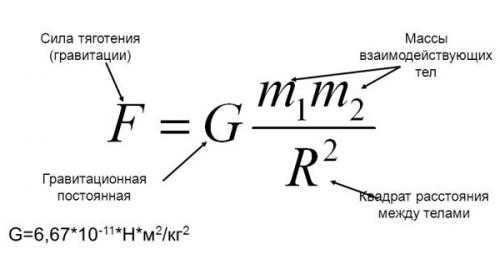
The force of attraction between objects is what we commonly refer to as gravity. It is the force that pulls objects towards each other. However, there is a difference between gravity and the force of attraction. Gravity is the natural phenomenon by which all things with mass or energy are brought towards one another. On the other hand, the force of attraction is the specific force that causes objects to be attracted to each other due to their mass.
The gravitational field, on the other hand, is a potential field. This means that kinetic energy is conserved within the field. This conservation of energy simplifies the process of solving problems that involve measuring the force of attraction between objects.
What is the concept of gravity and is “zero gravity” theoretically possible?
When astronauts are observed floating in space beyond the Earth’s atmosphere, it is commonly referred to as experiencing zero gravity or weightlessness. However, it is important to note that they are still subject to gravitational forces from various celestial bodies such as the Earth, the moon, the sun, and other objects in the universe. So, what does zero gravity truly mean? Can it be achieved in practice? And are experiments conducted on the International Space Station truly in conditions of “Zero Gravity”?
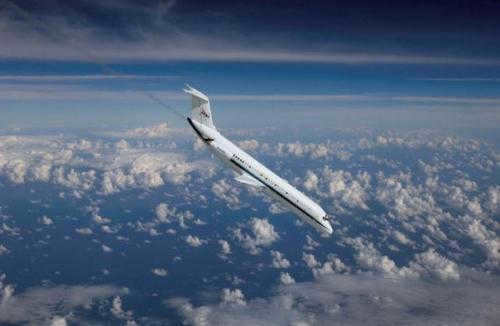
One of the great things about this query is that you don’t need to venture into outer space to encounter the concept of “Zero” or “non-zero” gravity.
Now, let’s eliminate that force. There are numerous ways to accomplish this:
You have the ability to eliminate the supporting surface, whether it be the floor, a chair, or any other object.
You have the power to disable gravity, which will result in a weightless state.
You have the capability to deactivate the electromagnetic interactions between yourself and the atoms on the surface.
In the first scenario, you will descend downwards, akin to walking on thin ice and falling through. In the second scenario, you will come to realize that the existence of a normal force is solely due to the gravitational pull towards the ground, and the chair providing an equal and opposite force. By deactivating gravity, you will eliminate the force of gravity and consequently the opposing force. In the third scenario, the force of gravity will persist and draw you towards the center of the Earth, but without the interaction of electromagnetic forces between your atoms and the floor, you will simply pass through it.
These three scenarios are clearly distinct. In the initial scenario, the force of gravity will pull you downwards, causing you to accelerate towards the center of the earth. This acceleration will continue until you either cease accelerating due to the resistance of the air or until you encounter the gravitational force of the earth (or another solid object). In the second scenario, you will experience a sensation of weightlessness and will not undergo any acceleration; this can be considered true zero gravity. In the third scenario, you will accelerate towards the center of the earth along an ellipsoid, with the center of the earth serving as one of the foci. Additionally, you will return to your starting point every 90 minutes.
What’s interesting is that in all three scenarios, you will feel the same at the starting point.
The principle asserts that it is impossible to differentiate gravitational acceleration from any other type of acceleration, like that produced by rocket thrust. It posits that if you and the reference points accelerate simultaneously and in the same manner, it would be tantamount to experiencing no acceleration at all. The sensation of force you perceive while the earth rotates on its axis and orbits the sun is indistinguishable from the sensation you would experience if the sun vanished and the earth simply spun in the vacuum of space.
When we talk about Zero Gravity, we are not implying that the force of gravity disappears completely. There is no location in the vast expanse of the universe where we can successfully escape from the grasp of gravity, nor is there any need for us to do so. All we have to do is neutralize the normal force, which entails placing ourselves and the reference point in identical conditions. We must accelerate in the same manner as our surroundings, without any differential force acting upon us. This is precisely how a journey on the Vomit Comet operates, as the aircraft’s engines power down and it plummets for a duration of 40 seconds, all while you are on board.
If it weren’t for the absence of air rushing past you, the feeling of weightlessness could be compared to falling. The lack of relative gravity between you and what you consider the “Bottom” is what creates this experience. However, if you were to experience zero relative gravity, you would face a range of physical issues such as bone loss, muscle atrophy, visual impairment, and even blindness. Additionally, you would lose all the calluses on your feet and experience increased flatulence. Astronauts are exposed to all of these risks, as exemplified by Apollo 16 astronaut John Young’s infamous “space fart” on the moon, which he humorously attributed to orange juice.
However, the notion of zero gravity might be a complete fallacy, as there is no place in the cosmos where one can elude the pull of this force. From the perspective of your corporeal form, as long as your environment is accelerating at the same velocity as you, there will be no discernible distinction. Being in a state of weightlessness and being in a state of free fall are essentially interchangeable in terms of your perception. Thus, although nothing in the universe can truly encounter zero gravity, everything has the ability to plummet, thereby rendering it equivalent. Source: hi – News. ru.
Recalling our physics lessons from school, we can say that the acceleration of objects falling freely on the Earth’s surface (due to gravity) is approximately 10 m/sec.² (more precisely, 9.8 m/sec.², but for simplicity, we often use 10). This means that if we neglect air resistance (which is negligible at small distances and high altitudes), an object will experience an acceleration of 10 m/sec. every second it falls. As a result, a book dropped from the second floor of a building will reach a speed of around 30-40 m/sec. by the time it reaches the ground. In simple terms, 10 m/sec. represents the “speed” of gravity on Earth.
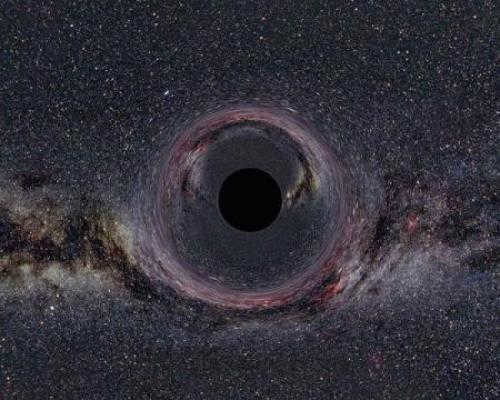
In scientific literature, the force of gravity is often represented by the symbol “g”. Due to the Earth’s slightly oblate shape, resembling a tangerine rather than a perfect sphere, the value of this force varies across different regions. For instance, the acceleration of free fall is greater at the poles and slightly lower at the tops of tall mountains.
Even in the field of mining, gravity plays a significant role. The physics behind this phenomenon can save a considerable amount of time. Geologists, for instance, rely on precise measurements of g to accurately locate and identify mineral deposits. Speaking of which, what does the gravity formula look like, where the value we discussed earlier is of utmost importance? Here it is:
Take note! In this context, the gravity formula refers to the “gravitational constant” denoted by G, the value of which we have already mentioned.
During his era, Newton developed the aforementioned principles. He possessed a thorough comprehension of the unity and universality of the gravitational force, but he was unable to comprehensively elucidate all facets of this phenomenon. This responsibility ultimately fell upon Albert Einstein, who additionally succeeded in elucidating the principle of equivalence. It is to Einstein that humanity owes its contemporary comprehension of the fundamental nature of the space-time continuum.
Gravity, as it turns out, is a straightforward idea that has been familiar to individuals since their days on the school desk. We all recall the tale of the apple striking Newton’s head and his subsequent discovery of the law of universal gravitation. However, the reality is not as straightforward as it appears. In this article, we will strive to offer a lucid and all-encompassing response to the query: what exactly is gravity? Additionally, we will examine the primary myths and misunderstandings surrounding this captivating phenomenon.
In simple terms, gravity is the force of attraction between two objects in the universe. The strength of gravity can be determined by the mass of the objects and the distance between them. The stronger the gravitational field, the heavier an object will be and the faster it will accelerate. For instance, an astronaut would weigh six times less on the Moon compared to Earth. The intensity of gravity is influenced by the size of the object it encompasses. For instance, the Moon has a gravitational force six times weaker than that of Earth. This was first scientifically substantiated and proven through mathematical calculations by Isaac Newton in the 17th century.
How can we explain gravity to children in a simple way?

Derived from the Latin word gravitas, meaning “heaviness” or “seriousness,” gravity is a mysterious force that exerts an invisible pull between objects of different masses. This force plays a crucial role in determining the positions of galaxies, planets, satellites, and all other celestial bodies. On Earth, gravity ensures that objects are attracted to the planet’s surface and remain grounded instead of floating away into space. Considered one of the four fundamental forces in physics, along with the weak and strong nuclear forces and electromagnetism, gravity governs the workings of the entire universe.
Due to the ever-evolving nature of scientific research, there is no precise definition of gravity. The study of gravity and theories about its nature are constantly evolving, expanding, and improving. Currently, the most relevant scientific explanations of gravity include Newton’s law of universal gravitation, along with subsequent additions and Einstein’s general theory of relativity.
Gravity and the principle of universal gravitation
The principle of universal gravitation, proposed by Newton, does not seek to explain the fundamental nature of the origin of gravity, but rather provides a tool for making accurate mathematical calculations in practical applications. To this end, the formula is utilized.
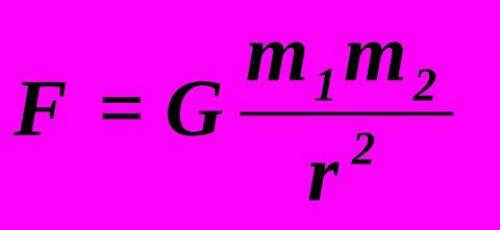
- F represents the force of attraction;
- r represents the distance between their centers;
- G represents the gravitational constant, which is equal to 6.67×10 -11 m 3 /kg×s 2 and represents the force with which two bodies placed at a distance of 1 meter and having the same mass of 1 kilogram would act on each other.
Every object in the universe creates an intrinsic gravitational field, regardless of its mass.
The strength of gravity varies on each planet and directly depends on the mass of the celestial body. For instance, the gravity on Jupiter is significantly higher than on Earth. On a body weighing 60 kilograms on Earth, Jupiter would exert a gravitational force equivalent to what Earth exerts on a body weighing 142 kilograms.
Despite the fact that Newton’s law of universal gravitation provides a perfect mathematical description of gravity, it gives rise to conflicts and inconsistencies when it comes to the range and speed at which this force propagates.
The issue lies in the fact that Newton’s theory assumes that gravity extends throughout the entire universe and acts instantaneously in every part of it. However, this contradicts the fact that the maximum speed allowed in physics is the speed of light. Even if gravity were to travel at the speed of light, it would still not be able to act instantaneously in small regions of space, as it would need to overcome the distance.
The solution to this problem was found in Einstein’s general theory of relativity, which views gravity not as a force, but as a curvature of spacetime caused by the presence of masses.
To provide an illustration, let’s envision a piece of fabric stretched across a circular frame. When an apple is positioned on the fabric, it causes the fabric to curve. If a substantial weight is placed nearby, the fabric will curve in a different location, and the apple will be drawn toward the weight.
In the realm of particle physics, scientists have developed the concept of a graviton – an theoretical elementary particle that is responsible for the force of gravity. Although this particle possesses no mass, it possesses energy that enables it to exert an influence on the behavior of other elementary particles.
The concept of gravitational waves
Despite being widely accepted by the scientific community, Einstein’s general theory of relativity received further confirmation in 2015 with the discovery of gravitational waves by physicists.
For those not well-versed in theoretical physics and astronomy, envisioning gravitational waves can be likened to the ripples that form when a stone is thrown into water. These waves possess a similar shape and structure, but instead of appearing on the water’s surface, they manifest in the fabric of space-time within the Universe.
Gravitational waves exert an additional influence on nearby objects and are generated when there is a sudden change in mass at a specific point. One example of such a mass change in the space-time structure would be the merger of supermassive black holes.
Due to the low gravitational force, scientists have struggled to detect these waves for a long time. Even with the advancements in technology, they had to install a four-kilometer-long detector with suspended mirrors in a vacuum.
There is a common misconception that gravity is extremely powerful. In reality, it is the weakest of all fundamental interactions. To illustrate this, consider the fact that even small magnets on a refrigerator are held in place by magnetic attraction, seemingly unaffected by the force of Earth’s gravity.
Antigravity is the concept of opposing the effects of gravity to the point of being completely negated or even surpassed through gravitational repulsion.
In theory, antigravity is not possible due to the principle of equivalence between gravitational and inertial forces, as well as the general theory of relativity, which lacks the necessary components to create a negative curvature of space.
The possibility of antigravity is directly related to the possibility of gravitational repulsion itself. Currently, the question of whether antigravity exists remains unanswered, in part because the nature of gravitation is still being extensively studied.
As part of the ongoing efforts to detect antigravity, researchers are conducting studies on the gravitational properties of antihydrogen.
The term “antigravity” is often misused, especially in science fiction, to refer to gravitational repulsion as the opposite of gravitational attraction. However, it is important to note that antigravity and gravitational repulsion are not the same thing.
In science fiction, the term “antigravity” is often used to describe a broader range of phenomena, including gravity shielding, gravity damping, and gravitational repulsion of objects.
- Exotic matter
- The principle of equivalence of gravitational and inertial forces
- Levitation (physics)
- Commission Against Pseudoscience
- Diamagnetics
- The Biefeld-Brown effect
- G. B. Andresen, et al. Confinement of antihydrogen for 1000 seconds // Nature Physics. – 2011-7. – Vol. 7 , iss. 7 . – P. 558-564 . – ISSN 1745-2481 1745-2473, 1745-2481 . – DOI : 10.1038/nphys2025 .
- Citation from a review by Valov N. Yu.
To enhance the quality of this article, it is recommended to:
- Revise the article’s structure in accordance with the guidelines for writing articles.
- Verify the accuracy of the information presented in the article.
- Include properly formatted footnotes referencing independent authoritative sources that confirm the information presented.
What is energy?
Video: The true nature of gravity
What does singularity mean?
Hello, esteemed readers of the KtoNaNovenkogo.ru blog. During conversations with individuals, we occasionally come across a rare, unfamiliar word to most people – “singularity”. People tend to use such words to make themselves sound important, but they often struggle to provide a precise definition.
The literal translation from Latin is not hard to find. The word “singularis” means special, unique, and signifies the exceptional nature of an event, entity, or phenomenon. This seems much simpler, but it is at this point that confusion arises.
This concept finds its application in various domains of human life, including science, technology, and philosophy. Each field interprets it in a unique manner, making it appear as if we are discussing entirely unrelated topics. There is a distinct lack of consensus even when it comes to comprehending the essence of this term.
To further complicate matters, scientific minds have devised various types of singularity, seemingly with the intention of causing complete confusion. According to Wikipedia, these include:
- Mathematical singularity, which refers to a point where a function’s behavior becomes unpredictable and tends towards infinity;
- Gravitational singularity, which describes a region of spacetime where it is impossible to accurately plot a geodesic line. Black holes, under the influence of gravity, distort spacetime to such an extent that it may rupture. Some theorize that these distortions and ruptures could potentially lead to passage into another reality, as the laws of physics break down in this extreme environment;
- Cosmological – The state of the universe at the moment of the Big Bang. There is a hypothesis (what is it?) that it originated from an atom of substance with immeasurable temperature and density values. Critics of the hypothesis argue that this is implausible because an infinite density implies that disorder is approaching zero, which is not possible at infinite temperatures. Therefore, it can be concluded that the laws of physics do not apply in a singularity;
- Technological – A point in time when robots will start improving themselves without any human intervention. It is believed that such a moment will occur before 2045, by which time the human mind will no longer be capable of comprehending the extent of technological advancement.
- The field of philosophy is unique in that it captures the essence of singularity, which refers to the individuality of beings, events, and phenomena, closely resembling its Latin origin. However, it is important not to jump to conclusions too quickly, as in the realm of philosophy, singularity refers to the entire universe condensed into a minuscule point with dimensions approaching zero. Within this infinitesimal atom, the entirety of the universe’s substance, along with consciousness, life, emotions, and self-awareness of individuals, can be found!
Gravity is the bending of the fabric of space. The Earth bends the fabric of space and time.
In accordance with Einstein’s theory, any massive rotating object, like our planet, distorts and curves the fabric of space and time around it. In order to verify this theory, NASA launched the Gravity Probe B (GP-B) into orbit around the Earth in 2004. The gyroscopes on board the GP-B have shown a clear change in orientation over time, and exactly as predicted by Einstein’s calculations. “Imagine the Earth being submerged in honey,” explains Francis Everitt, the lead researcher of the Gravity Probe B mission. “As the Earth rotates, the honey swirls around it. The same phenomenon occurs with space and time.”

The origin of gravity and electricity
Therefore, what is the source of the mutual attraction between particles of matter?
“In 1913, the young French mathematician E. Cartan proposed the existence of fields generated by rotational forces in nature. During the 1920s, A. Einstein published several works in this area, further exploring the concept. By the 1970s, the Einstein-Cartan theory had emerged as a new field of physics, serving as the foundation for the study of torsion fields. Rotation is a fundamental aspect of our world, with examples ranging from the electron’s orbit around the nucleus to the planets’ orbits around the Sun. Each instance of rotation, whether large or small, generates its own unique torsion field. These fields, found in elementary particles, atoms, molecules, humans, planets, and more, combine to form the vast Information Field of the Universe, often referred to as the Consciousness Field of the Universe.” (Science and the subtle world)
Like how matter attracts through gravity, magnets and wires also attract when an electric current passes through them. This leads to the idea that attraction and gravity are somehow connected to the energy of electromagnetic waves. However, electromagnetic waves do not have a magnetic attraction to physical objects, which is why they propagate in a straight line. But when an electromagnetic wave is formed within an atom as a closed space in the shape of a solenoid from the rotating flow of electromagnetic wave energy, a potential difference and a magnetic axis instantly emerge, creating an attractive force. Therefore, the sources of attraction (gravity) and electricity (EMF and charges) are the rotating energy of electromagnetic waves that make up atoms.
When there is a large number of atoms present, their overall magnetic component increases. As a result, the accumulated atoms are attracted to each other. According to Newton’s law, the force of attraction depends on both the mass (the quantity of atoms as materialized energy) and the distance between material objects.
In addition to the gravitational energy from the mass of the Earth, there is also energy of magnetic attraction from the Earth’s rotation around its axis. The Earth, which consists of a vast number of atoms that are energy objects, forms a massive solenoid as it rotates. This leads to the formation of a magnetic axis and a shell, resulting in the addition of magnetic attraction to gravitational attraction.
As a philologist, copywriter, and internet marketer, I make it a point to read at least 2 books every month, but I always strive for more.
Expert – Margarita Lopukhova
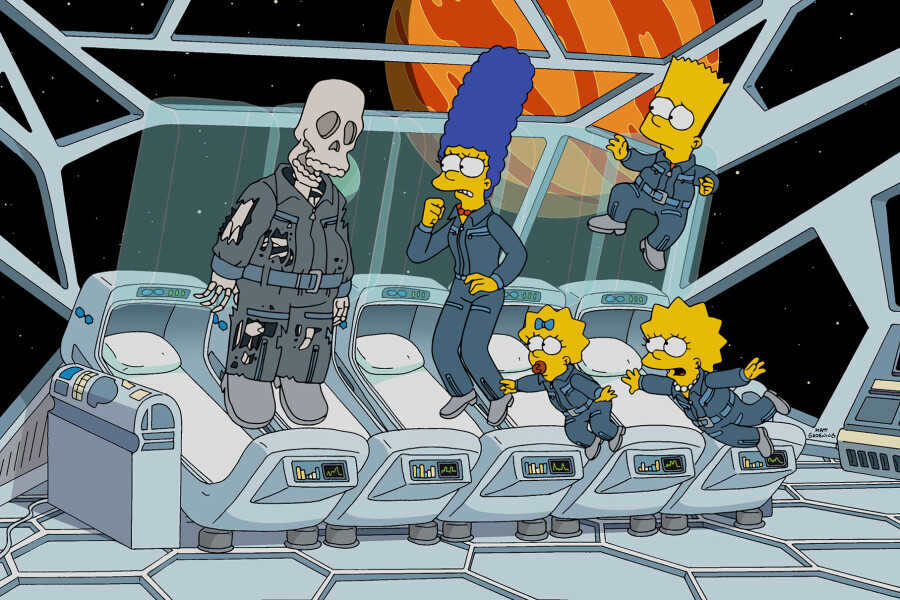
Gravity is a fundamental force in the cosmos that pulls objects towards one another. It has a vital role in molding the movement of celestial bodies, such as planets, stars, and galaxies, and it defines the framework of the universe. In this piece, we will examine the mechanics of gravity, supported by scientific proof, and endeavor to ascertain if it is indeed a tangible reality or merely a trick of our perception of the surrounding world.
What is the concept of gravity?
Gravity is an essential natural force that draws massive entities towards one another. This force is evident between all objects with mass, such as planets, stars, galaxies, and even common objects found on Earth. It is among the four primary fundamental forces in the natural world, including the electromagnetic, strong, and weak nuclear forces.
The force of gravity arises from the mass of objects and the distance separating them. According to Isaac Newton’s law of universal gravitation, this force is directly proportional to the product of the masses of two objects and inversely proportional to the square of the distance between them.
Enormous objects, like the Earth, have a magnetic pull on everything on their surface. It is the force of gravity that keeps us grounded on the Earth’s surface and gives us a feeling of heaviness. Gravity also determines how celestial bodies, such as satellites, planets, and stars, move, and it controls the creation and development of the universe.
Therefore, gravity is extremely important in comprehending physical processes on Earth and in outer space. It plays a vital role in astronomy, astrophysics, cosmology, and other scientific fields. Understanding gravity helps to elucidate the movement of planets, moons, and other celestial objects, as well as to predict and investigate various cosmic phenomena like black holes, gravitational waves, and the expansion of the universe.


Currently, the phenomenon of gravity is explained through the principles outlined in the general theory of relativity, which was formulated by Albert Einstein during the early 1900s. This theory offers the most precise explanation of gravity to date, encompassing both its classical characteristics and its impact on the fabric of space and time.
- Objects falling on Earth are a result of the gravitational force, which causes them to move towards the ground. This phenomenon can be observed repeatedly in various conditions.
- The planets move in orbits around the Sun due to the gravitational force, which maintains their stable trajectories.
- Satellites in space remain in their orbits around the Earth because of the Earth’s gravitational pull.
- The tides in the oceans are caused by the gravitational pull of the Moon and Sun, leading to changes in sea level.
- Gravitational lenses are created when the gravitational attraction of massive objects causes light to bend. This effect has been verified through observations in space.
- Stars collapsing. The gravitational compression of massive stars leads to their collapse and the formation of black holes or neutron stars.
- Gravitational waves. Gravitational waves, which were predicted by Albert Einstein and discovered in 2015, provide direct evidence for the general theory of relativity.
- Motion of comets. The paths followed by comets as they orbit the Sun are also governed by gravitational laws, allowing us to track their movements in space.
- Measuring gravity. Satellite and terrestrial gravimeters are used to measure the gravitational field on Earth and in space, confirming the existence of the gravitational force.
- General Theory of Relativity. Albert Einstein developed the General Theory of Relativity in 1915, which provides a comprehensive explanation of gravity. This theory has been successful in describing gravitational phenomena and making accurate predictions about astronomical observations, providing strong evidence for the existence of gravity.
The Principles of Gravitational Attraction
The principles of gravitational attraction are rooted in the laws put forth by Isaac Newton in his renowned work, Mathematical Beginnings of Natural Philosophy (1687). These principles state:
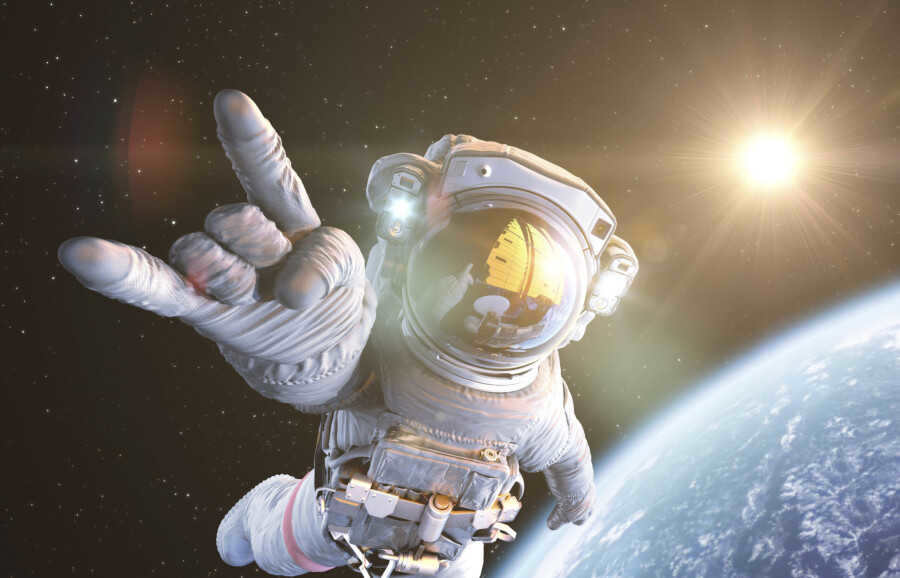
- Every mass object attracts all other mass objects towards it. This implies that regardless of their mass or distance, all bodies exert a gravitational force on one another.
- The gravitational attraction between two objects is directly proportional to the product of their masses and inversely proportional to the square of the distance between them. The greater the masses of the objects and the smaller the distance between them, the stronger the attraction will be.
- The force of gravity acts in both directions between two objects. This means that if one object attracts another object with a certain force, the second object will also attract the first object with the same force, but in the opposite direction.
- Time reversibility. The gravitational attraction remains unchanged regardless of the direction of time and behaves consistently both in the past and the future.

